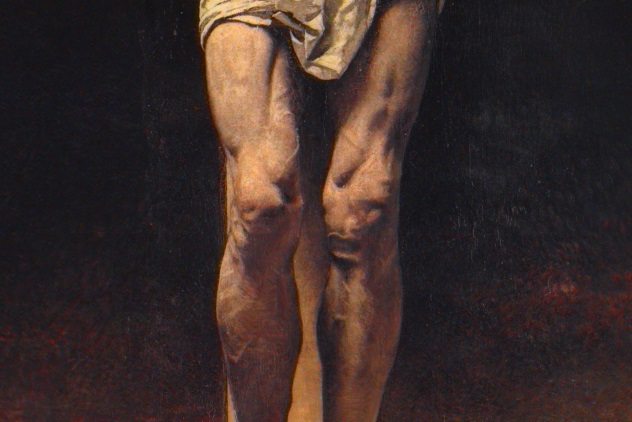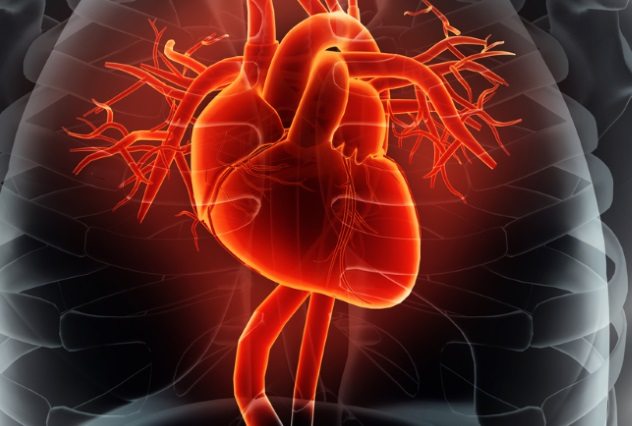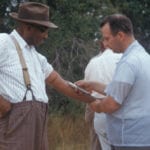 Music
Music  Music
Music  History
History 10 Less Than Jolly Events That Occurred on December 25
 Weird Stuff
Weird Stuff 10 Funny Ways That Researchers Overthink Christmas
 Politics
Politics 10 Political Scandals That Sent Crowds Into the Streets
 Weird Stuff
Weird Stuff Ten Bizarre Facts About The Doge Meme
 Our World
Our World 10 Ways Your Christmas Tree Is More Lit Than You Think
 Movies and TV
Movies and TV The 10 Coolest Stars to Set Sail on The Love Boat
 History
History 10 Things You Didn’t Know About the American National Anthem
 Technology
Technology Top 10 Everyday Tech Buzzwords That Hide a Darker Past
 Humans
Humans 10 Everyday Human Behaviors That Are Actually Survival Instincts
 Music
Music 10 Surprising Origin Stories of Your Favorite Holiday Songs
 History
History 10 Less Than Jolly Events That Occurred on December 25
 Weird Stuff
Weird Stuff 10 Funny Ways That Researchers Overthink Christmas
Who's Behind Listverse?

Jamie Frater
Head Editor
Jamie founded Listverse due to an insatiable desire to share fascinating, obscure, and bizarre facts. He has been a guest speaker on numerous national radio and television stations and is a five time published author.
More About Us Politics
Politics 10 Political Scandals That Sent Crowds Into the Streets
 Weird Stuff
Weird Stuff Ten Bizarre Facts About The Doge Meme
 Our World
Our World 10 Ways Your Christmas Tree Is More Lit Than You Think
 Movies and TV
Movies and TV The 10 Coolest Stars to Set Sail on The Love Boat
 History
History 10 Things You Didn’t Know About the American National Anthem
 Technology
Technology Top 10 Everyday Tech Buzzwords That Hide a Darker Past
 Humans
Humans 10 Everyday Human Behaviors That Are Actually Survival Instincts
10 Excruciating Medical Facts About The Crucifixion Of Christ
Torture has been part of society for centuries. People use it to punish, to extract information, and to deter others from doing certain things. Different cultures have tried and perfected the vast array of tortures known to mankind. One of those ways—perfected for excruciating pain by the Romans—is crucifixion. It’s how the Romans killed Jesus.
But are the nails the only cause of pain? Perhaps something more takes place than what is readily apparent to the naked eye. Today, medical science sheds light on what happens to a victim’s body during the process of being crucified. The physiological responses the body undergoes when hanging from the wood are beyond what most of us even realize—and the results are more than grim.
Here are ten excruciatingly painful facts about crucifixion that you may have never realized before.
10 The Victim Suffocates To Death

There are many theories how someone who is crucified dies. The most probable is that he suffocates after many hours or even days of hanging on the cross. The weight of the body pulling down on the diaphragm complicates breathing.[1]
The victim would support his weight by pushing up from the legs while simultaneously pulling up from the wrists. As the leg muscles would tire, he would have to allow his body to hang limp while struggling to breathe. This process continued until the leg muscles gave out, forcing the condemned to hang and suffocate.
9 The Person’s Legs Might Be Broken

In some circumstances, an executioner needed to end the crucifixion. To do so, the soldiers would break the victim’s legs by smashing the femur bones with a large, heavy mallet. This prevented the person from being able to push up from the feet to reposition the diaphragm for breathing, thus forcing him to suffocate.[2]
It has been said that a broken femur is one of the most painful things a person can experience. The initial physical pain of having both femurs shattered at the same time would be devastating. Furthermore, the psychological torture of feeling death approaching would be mentally unbearable. Even though the condemned may want to die because of the intense suffering of hanging on the cross for so long, the simple fact is that the human brain and body are designed for survival. Pushing up on the legs to breathe is painful, but it satisfies that innate survival instinct. Crushing the victim’s legs however, forces him or her to lose control of the battle and to suffocate to death while both the body and the mind instinctively resist the inevitable process of being forced to die.
8 The Nerves In the Arms Rubbed Against The Metal From The Nails

The nails driven into the wrists would pierce the main nerve running through the arm. When the victim pushed up to breathe, the wrists rotated against the nail, which would irritate the nerves and cause intense pain in the arms.[3] The direct exposure of the nerve to the thick slab of metal produced a constant, recurring pain that had to be endured every time the crucified person pulled up to breathe.
This would be like someone having an arm cut off and then having a piece of bone pressed into the open wound and twisted into the nerve.
7 Skin And Muscle Were Ripped Off The Person’s Body Before Crucifixion

Crucifixion involved more than just nailing someone to a cross or tree. It was proceeded by a beating with a nine-tailed whip that had metal tips and bone clippings on the end of every strap.[4] The executioner strapped the victim to a block of wood while soldiers beat the shard tips of the whip into the back, buttocks, and legs of the condemned. The bones would tear into the flesh and then rip both skin and muscle away when retracted.
This was known as flogging and would sometimes last for extended periods of time. The purpose was to mar the victim beyond recognition up to, but not through, the point of death. Oftentimes, the tails of the whips reached over the back and clung into the front of the shoulders and the chest. The torturers also repeatedly lashed the skull, face, and neck. This tearing away of the human flesh put the victim into an immediate state of shock. Major blood loss ensued. And the procedure was just beginning . . .
6 Wooden Splinters Scourged The Flesh Further

After being flogged with the nine-tailed whip, the victim had to carry a wooden beam to the place of crucifixion.[5] This wood was not smooth and treated. It was a splintered, jagged tree. The ragged plank moved up and down the victim’s back, shoving splinters into the open wounds.
This continued after being nailed up. Every time the condemned shifted weight from the feet to the arms then back to the feet, his back rubbed against the splintered wood, causing a constant stabbing into the open flesh. Some of the wooden shreds remained lodged in the muscles and exposed nerve endings. Others simply tore the wounds even further open and then continued to streak the back with gore as the victim shifted.
5 Hypovolemic Shock

The initial beating alone was enough to induce the onset of hypovolemic shock. This occurs when a person loses 20 percent or more of the body’s blood supply. The blood loss depletes the body of oxygen and prevents the heart from pumping more blood, which results in even less reaching the cells.[6] The cycle is vicious and can continue until the person dies from the condition.
The symptoms of hypovolemic shock include nausea, profuse sweating, dizziness, confusion, and loss of consciousness. Victims would frequently vomit, which, in some cases, hastened the speed of suffocation as bodily fluids choked and gagged victims who were already struggling to breathe.
4 The Shoulders Dislocate

This happens at the onset of the crucifixion. The vertical beam is already in the ground. The victim carries the horizontal beam, and then the executioner nails him to it while on the ground. With the person’s wrists nailed into the horizontal beam, the executioner lifts and then hammers it into the vertical beam.
When this happens, the victim’s feet still aren’t nailed into the vertical beam.[7] Therefore he has nothing to push up with, and the weight of the hanging body, once raised, pulls the shoulders out of their sockets. The body then sinks lower, dislocates the wrists.
The result is that the arms are extended at least 15 centimeters (6 in) beyond their normal span of reach. This causes the body to hang in an extended, slumped position, which forces the chest cavity to protrude outward. The extended chest cavity allows for inhalation but makes exhaling nearly impossible. The effect from this is that carbon dioxide is not released from the body as is done through proper exhalation during the natural process of breathing.
3 Cardiac Stress And Hyperventilation

Since the body doesn’t get enough oxygen while hanging on the cross, the natural physiological response is to hyperventilate. Not being able to do so, however, the heart pumps harder, trying to overcompensate for the lack of oxygen. The heart then goes into cardiac stress, which can even cause it to rupture inside the chest cavity.[8]
Symptoms of hyperventilation include fever and anxiety. Fever produces aches in the muscles. Since the muscles are already cramping and in spasm, this adds more complication to the severity of the pain. Given the fact that the victim is literally dying in (and from) pain, he is already exceedingly nervous and anxious. Coupling this with the body’s physiological responses makes for a sense of nervousness and central nervous system shock that most people today will never experience in their lifetime.
2 Muscle Cramping And Spasms

When a victim his hung on the cross, the knees are bent at a 45-degree angle.[9] This forces the person to sustain the weight of the body with the thigh muscles. It is painful to bend the knees and support one’s weight with the thighs alone for even five minutes. Doing this for hours, even days, is unimaginable.
But the victim has to do it. Until the legs are fractured or become too fatigued from days of holding one’s body weight, they will resist the cramping and the resulting muscle spasms to breathe. Survival demands it, even if the condemned wishes to just relax long enough to suffocate and end the misery.
1 Pain In The Vital Organs

The natural way for our vital organs to receive oxygen is through the flow of blood. Proper movement of the body’s exterior limbs (arms and legs) and their interaction with gravity facilitate this process. The cross interferes. The stationary arms and legs, combined with gravity’s work of pulling the blood downward, prevents the vital organs from receiving the proper flow of oxygen.[10]
The organs respond. The body’s natural tool for communication when something is wrong is pain. So, the vital organs signal to the brain that something is not right. They do this through the nerves that lead to the pain centers of the brain. Thus, along with all the other excruciating tortures on the cross, the oxygen-deprived organs scream unimaginable pain signals to the brain.
Aside from the ten facts above, it is important to remember two things: First, these do not happen in one nice sequence, with one occurring and then the victim having time to prepare for the next. They all happen at the same time. The combined effect is immense physical pain and torture. Second, the process of crucifixion lasted a long time. This list covers what happens, but reading it takes ten minutes. In some cases, crucifixion has lasted as long as ten days.
Crucifixion was more painful than just feeling three nails. It was an excruciating way to suffer and to die.
Aaron J. Daigle is a published author who blogs frequently and travels full-time as a public speaker in churches, universities, and other public events. You can follow him on Twitter or connect with him on Facebook.
Read more about crucifixion on 10 Interesting Facts About Crucifixion and 10 Horrifying Tortures Used In Ancient Rome.








